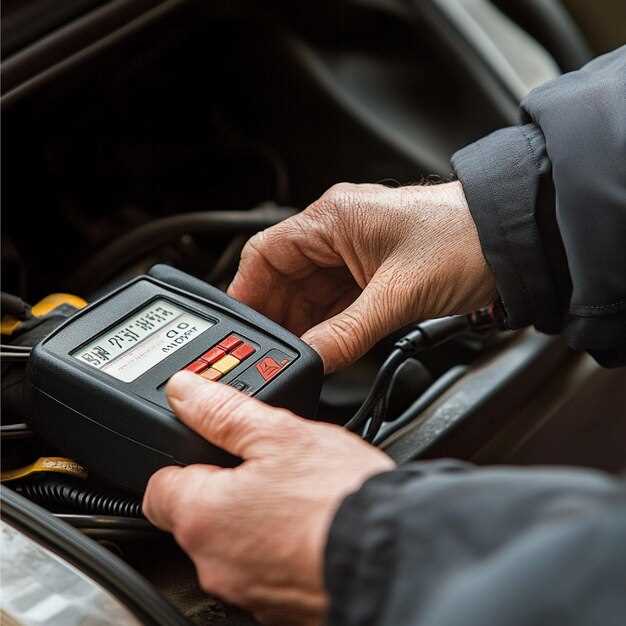
Basics of Using an OBD-II Scanner
- Arthur Rodriquez
- 0
- Posted on

In modern automotive technology, the ability to conduct effective diagnostics is essential for maintaining vehicle performance and reliability. One of the most powerful tools available to both mechanics and car owners alike is the OBD-II scanner. This device serves as a vital link between the vehicle’s onboard computer system and the technician, providing insights into the health and functionality of the vehicle.
The On-Board Diagnostics II (OBD-II) system was implemented in vehicles to standardize the diagnostic process across various makes and models. This system monitors the performance of essential components, including the engine, transmission, and emissions systems. By using an OBD-II scanner, individuals can retrieve trouble codes and live data that facilitate a deeper understanding of potential issues affecting their vehicle.
Understanding the basics of OBD-II scanners not only empowers car owners to take charge of their vehicle’s health but also increases their awareness of how automotive systems operate. With this knowledge, vehicle diagnostics become more straightforward, allowing for informed decision-making when it comes to repairs and maintenance. Whether you’re a seasoned mechanic or a DIY enthusiast, mastering OBD-II scanner functionalities can lead to significant savings in both time and money.
Choosing the Right OBD-II Scanner for Your Vehicle

Selecting the appropriate OBD-II scanner for your vehicle involves several key considerations. First, identify the compatibility of the scanner with your car’s make and model. Not all scanners work well with every vehicle, so consult the user manual or product specifications to ensure compatibility with OBD-II protocols.
Next, consider the functionality you need. Basic scanners can read and clear diagnostic trouble codes (DTCs), while advanced models offer features such as live data streaming, freeze frame data, and advanced diagnostics for specific systems like emissions, ABS, and airbags. Determine the level of detail required for your diagnostics to select an appropriate model.
Ease of use is another important factor. A user-friendly interface, clear display, and straightforward navigation make the diagnostic process smoother. Look for scanners with a good reputation for their ease of use, especially if you’re a beginner.
Additionally, evaluate the update frequency of the scanner. An OBD-II scanner that allows for regular software updates will enable you to stay informed about new vehicle models and their respective DTCs. This is especially important as manufacturers continuously update their systems.
Lastly, consider your budget. OBD-II scanners range from basic models priced under $50 to advanced professional-grade options costing several hundred dollars. Assess which features are essential for your needs and find a model that offers the best value within your budget.
How to Interpret OBD-II Error Codes Accurately
Interpreting OBD-II error codes requires a systematic approach to ensure accurate diagnostics and effective troubleshooting. Here are key steps to help you interpret these codes effectively:
- Understand the Code Structure:
- OBD-II codes consist of five characters, beginning with a letter followed by four digits.
- The first character indicates the system related to the fault:
- P: Powertrain (engine and transmission)
- B: Body
- C: Chassis
- U: Network Communication
- Research the Specific Code:
- Use an OBD-II code lookup tool or an online database to find detailed descriptions of the error code.
- Pay attention to manufacturer-specific codes, which may provide additional insights.
- Consider Related Symptoms:
- Identify any physical symptoms, such as engine noise or warning lights, that correlate with the error code.
- Document changes in vehicle performance, such as reduced fuel efficiency or unusual vibrations.
- Check for Common Issues:
- Research typical problems associated with the specific error code.
- Common issues may include sensor failures, wiring problems, or mechanical failures.
- Perform Further Diagnostics:
- After identifying potential causes, carry out additional diagnostic tests, including inspecting components and running live data assessments.
- Utilize specialized tools for more complex diagnostics, such as oscilloscope measurements for electrical issues.
- Consult Professional Resources:
- If uncertain, consult repair manuals or automotive professionals for insights specific to your vehicle make and model.
- Participate in automotive forums or communities for troubleshooting assistance and collective experiences.
Interpreting OBD-II error codes accurately is vital for effective vehicle diagnostics. By following these guidelines, you can enhance your understanding of what each code signifies and approach repairs methodically.
Performing Advanced Diagnostics with OBD-II Tools

Advanced diagnostics using OBD-II tools allows technicians and vehicle enthusiasts to identify and troubleshoot complex issues beyond standard trouble codes. These sophisticated tools provide access to real-time data, enabling users to monitor various parameters, such as engine performance, fuel efficiency, and emission levels.
One key aspect of advanced diagnostics is the ability to read and interpret Enhanced Diagnostic Trouble Codes (DTCs). Unlike basic OBD-II codes, these enhanced codes offer detailed insights into specific vehicle systems, including transmission, anti-lock brakes, and airbag systems. Utilizing these codes helps pinpoint issues more accurately, leading to efficient repairs.
OBD-II tools also facilitate performing bi-directional controls, allowing users to command certain functions within the vehicle’s systems. This feature can help in testing actuators, such as fuel injectors or solenoids, to determine their operational status without manual intervention. Conducting such tests can significantly expedite the diagnostic process and confirm system integrity.
Additionally, advanced tools can display live data streams, which provide a dynamic view of various system inputs and outputs. Monitoring this data in real-time assists in identifying trends or irregularities, such as abnormal engine temperatures or fluctuating sensor readings. This information is crucial for diagnosing intermittent problems that may not trigger a DTC.
Another essential aspect of advanced diagnostics is the ability to perform active tests and perform programming for new components. Some OBD-II scanners allow for resetting service lights, calibrating sensors, and even programming new keys. This not only enhances the diagnostic capability but also improves the overall efficiency of vehicle maintenance and repair tasks.
Overall, leveraging advanced diagnostics with OBD-II tools empowers automotive professionals to conduct thorough examinations, ultimately leading to more effective repairs and better vehicle performance.